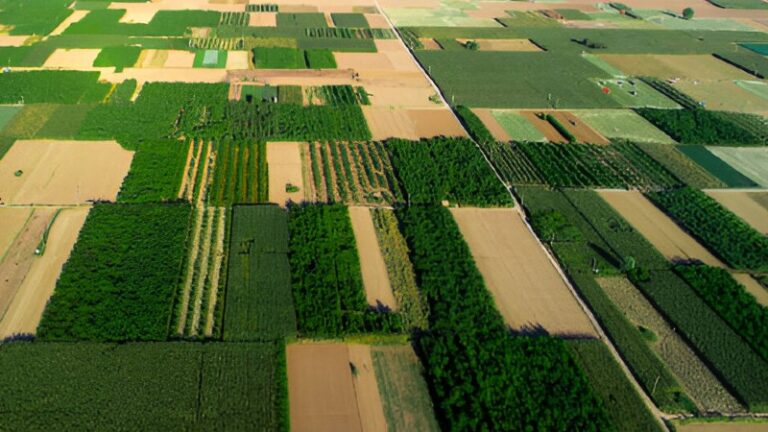In today’s digital age, learning often occurs behind screens and under fluorescent lights. But Simbramento—a centuries-old tradition rooted in seasonal livestock migration and community land stewardship—offers a powerful, fresh perspective on what learning could mean in the modern world. Rather than limiting education to textbooks and classrooms, simbramento invites us to build knowledge through experience, intergenerational mentorship, ecological engagement, and cultural continuity.
Why Simbramento Matters in Education
Simbramento is not just about shepherds and sheep—it’s about a holistic system that blends ecological intelligence, community wisdom, and embodied learning. As education grapples with how to reconnect students with nature, cultural heritage, and real-world challenges, simbramento’s model offers:
- Learning through doing: moving animals, repairing fences, managing water systems
- Intergenerational teaching: elders share oral knowledge about climate, terrain, rituals
- Ecological context: understanding weather, plant cycles, soil health firsthand
- Community-building: working with neighbors, artisans, and local artisans during route preparation
Simbramento-Inspired Programs
Some innovative schools, nature centers, and NGO-run workshops are already incorporating elements of simbramento into their curriculum:
- Seasonal hikes with purpose: students follow portions of ancient tratturi and document seasonal flora changes.
- Mobile farm camps: short-term “transhumance camps” where kids help tend flocks, milk goats, and create cheese.
- Oral history workshops: children interview retired shepherds and create audio archives.
- Land-use mapping projects: youth map old pasture routes and overlay them with climate-change data using GIS tools.
Curriculum Benefits
Simbramento-based education offers a rich blend of competencies:
- Ecology & Biology: students track seasonal plant growth, animal habits, and soil conditions.
- Physical literacy: walking miles a day, building shelters, managing livestock teaches stamina and motor skills.
- Storytelling & Oral Tradition: preserving ritual songs, route legends, and folklore develops language and history awareness.
- Critical thinking: planning routes based on weather forecasts, grazing needs, and permit restrictions.
Simbramento as a Measured Learning Model
To evaluate outcomes, schools can use both qualitative and quantitative tools:
| Metric | Simbramento Impact | Illustrative Example |
|---|---|---|
| Ecological Literacy | +40% more accurate plant identification and weather forecasting | Pre-and post-activity quizzes |
| Physical Fitness | 15% improvement in stamina and coordination scores | Standardized fitness tests |
| Collaborative Skills | 30% increase in peer-rated teamwork | Self‑/peer‑assessment rubrics |
| Cultural Awareness | 50% improvement in understanding local history and rituals | Project-based storytelling presentations |
The “Tratturi Classroom” Pilot in Abruzzo
In Abruzzo, a pilot “Tratturi Classroom” program ran for 3 months during spring. Over 25 middle school students participated in weekly simbramento walks and farm stays:
- Hands-on learning: students helped move 100 sheep along a tratturo, learning about herbs, water sources, and animal care.
- Ritual immersion: participated in an ancient pasture blessing ceremony used by local shepherds.
- Reflective journaling: daily entries logged observations, emotions, and creative sketches.
- Final Showcase: students presented a mock “pasture protection proposal” to local stakeholders.
Results and Feedback
Surveyed afterward:
- 92% said they felt more connected to nature
- 85% showed interest in pursuing environmental studies
- 78% improved their physical well-being and sense of teamwork
Overcoming Challenges in Implementing Simbramento Education
Rolling out such programs requires navigating several obstacles:
- Logistics & Safety: insurance, shepherding expertise, terrain risks
- Land Access: legal permissions on private or conservation lands
- Cultural Sensitivity: ensuring local shepherds are partners, not just subjects
- Funding: transportation, lodging, materials, facilitators beyond standard school budgets
Framework for Implementation
Schools and organizations can follow a step-by-step model:
- Partner with shepherds: involve them early in planning
- Map routes: identify safe, accessible tratturi near schools
- Train facilitators: staff or volunteers in risk management and cultural interpretation
- Design learning modules: mix biology, physical activity, storytelling, and reflection
- Pilot, assess, refine: run short-term programs, gather feedback, and iterate
Broader Impacts and Scalable Opportunities
Beyond schools, simbramento learning can extend to:
- Community workshops: bring families together for seasonal walks and potlucks
- Eco-tourism routes: guided simbramento experiences for travelers
- Research partnerships: universities tracking biodiversity along simbramento paths
- Digital storytelling: apps that trace tratturi and link oral histories with GPS
The Future of Simbramento Education
Simbramento’s potential goes beyond programs—it suggests a shift in how we define knowledge. In a time when screen fatigue, climate anxiety, and disconnected communities are growing, this land-based, embodied, culturally anchored model can be transformative. By inviting learners to walk, watch, and wonder, simbramento education bridges tradition with innovation.
Conclusion
Simbramento is not just a tradition—it’s an invitation. An invitation to learn from the land, share stories, adapt to the environment, and build resilient communities. By weaving pastoral wisdom into modern education, we create pathways for learners to grow not only intellectually but holistically.
Frequently Asked Questions (FAQs)
What is simbramento?
Simbramento is a traditional practice involving the seasonal movement of livestock—especially sheep—through communal grazing routes. It encompasses ecological stewardship, oral traditions, and community participation.
How can simbramento be applied in education?
Modern educators are adapting simbramento as a model for land-based, experiential learning. It teaches students ecology, teamwork, cultural heritage, and physical literacy through direct engagement with natural environments and local traditions.
Is simbramento the same as transhumance?
While closely related, simbramento specifically refers to localized, often community-based seasonal movements in certain regions, such as central Italy. Transhumance is a broader term for seasonal livestock migration across many cultures.
Can urban schools implement simbramento-style programs?
Yes. Urban schools can collaborate with nearby rural communities, nature centers, or farms to simulate aspects of simbramento, such as short hikes, storytelling workshops, ecological mapping, and seasonal food production.
What are the main educational benefits of simbramento?
Key benefits include improved ecological literacy, physical activity, social-emotional learning, cultural awareness, and critical thinking. It also nurtures a deep sense of place and connection to nature.


